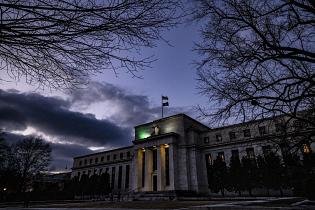Bond-Market Tumult Puts ‘Lower for Longer’ in the Crosshairs
February’s government-bond rout has rattled one of the foundations of the past year’s powerful stock-market rally: investor certainty that ultralow long-term interest rates are here to stay.
A wave of selling during the past two weeks drove the yield on the benchmark 10-year Treasury note, which helps set borrowing costs on everything from corporate debt to mortgages, to above 1.5%, its highest level since the pandemic began and up from 0.7% in October.
A series of Federal Reserve officials have said the climb is a healthy one, reflecting investors’ improving expectations for a vaccine- and stimulus-fueled economic recovery. Many portfolio managers say they believe rates are likely to flatten out in coming days as yields finally reach what they see as attractive levels. Those views will get a fresh test this week, with Fed Chairman Jerome Powell scheduled to make a public appearance Thursday and the release of February’s jobs report Friday.
But there are signs, such as unusually soft demand for recent Treasury debt auctions, that selling may not be over and yields may have further to rise. Some traders warn that bond markets are signaling a powerful economic recovery that could upend the dynamics that have held borrowing costs low while powering stocks to records—potentially a recipe for more of the topsy-turvy trading seen over the past week, when the Dow industrials swung more than 1,000 points over three days.
“There is a view that recovering from a pandemic looks different than from a normal recession,” said Michael de Pass, global head of U.S. Treasury trading at Citadel Securities.
Traders said concerning dynamics were evident in a Treasury auction late last week. Demand for five- and seven-year Treasurys was weak Thursday heading into a $62 billion auction of seven-year notes and nearly evaporated in the minutes following the auction, which was one of the most poorly received that analysts could remember.
The seven-year note was sold at a 1.195% yield, or 0.043 percentage point higher than traders had expected—a record gap for a seven-year note auction, according to Jefferies LLC analysts. Primary dealers, large financial firms that can trade directly with the Fed and are required to bid at auctions, were left with about 40% of the new notes, about twice the recent average.
The tepid demand concerned investors because the government is expected to sell a huge amount of debt in coming months to pay for the stimulus efforts that undergird the recovery. Further poor auction results could fuel additional selling in bond markets and undermine the tone in other markets, such as those for stocks, investors said.
Analysts thought that an increased supply of Treasurys could weigh on the market heading into the year, but “it’s very different when you’re actually dealing with it,” said Blake Gwinn, head of U.S. rates strategy at NatWest Markets.
Some traders said recent moves have been exacerbated by the unwinding of popular trades that involve buying short-dated Treasurys and selling other assets against them. Many singled out one in particular: holders’ effort to protect their investments in mortgage bonds against the climb in yields, a practice known in industry parlance as convexity hedging.
The Fed’s rate cuts during the past year helped fuel a wave of home sales and refinancings, but the recent climb in yields drove mortgage rates to their highest level since November this past week, and applications have dropped. That forces banks and other holders, such as real-estate investment trusts, to sell Treasurys to offset losses in mortgage bonds that happen when consumers stop refinancing.
Moves in market-based measures of inflation are also prompting concerns. Rising prices dent the purchasing power of bonds’ fixed payments and could force the Fed to raise rates sooner than expected. While inflation has remained muted for years, usually below the Fed’s 2% target, some worry that the economic reopening and stimulus efforts by the Fed and Congress could spark an acceleration.
Comments
There are 0 comments on this post






